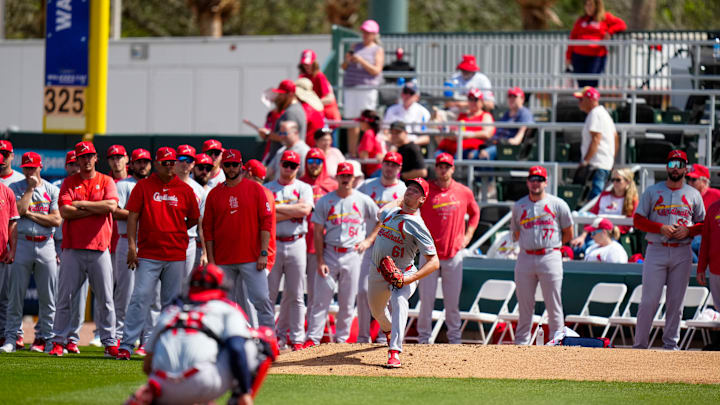The St. Louis Cardinals are making sweeping changes across the organization in an attempt to modernize their player development system, but a long-delayed renovation to their Spring Training stadium in Jupiter, Florida, will push a large portion of their technological advancements back to 2026.
Roger Dean Chevrolet Stadium, the shared Spring Training home of the Cardinals and the Miami Marlins that opened in 1998, was set to undergo significant upgrades in 2023, but those plans have been delayed twice. Now, if all goes as expected, the Cardinals will have access to a vastly improved stadium with all the modern amenities and technology in 2026.
The main revamps will include upgrades to the two teams' clubhouses and a new player development facility for each club. The plan was originally to rebuild the clubhouses entirely, but the scaling down of the project will allow the Cardinals and Marlins to play in the stadium during Spring Training instead of forcing them to find a temporary home.
But with the Cardinals' "reset" set to get underway in 2025, the primitive field will place the team at an ever-widening disadvantage.
The Cardinals recently committed to allocating more money toward the minor leagues, but to catch up to other teams, they will require more space and more sophisticated technology than what they currently possess in the outdated ballpark. The Cardinals have outgrown the current iteration of Roger Dean Chevrolet Stadium, so much so that the organization has been forced to lease space in a building across the street to trainers and medical staff.
With an estimated 20% increase in the Cardinals' spending on player development in 2025, the Cardinals are focused on fixing a system that no longer works. They have also hired several voices from outside the organization to fill previously vacant positions and provide new perspectives at all levels. But with the upgrades at the stadium not taking place for one more season, the Cardinals will not be able to utilize these new resources to their full extent.
The agreement for the upgrades will keep the Cardinals and Marlins in Jupiter through 2049, and the revamps are expected to cost the teams approximately $80 million over the next 25 seasons. If each team contributes 50% of the price, it will only cost the Cardinals $1.6 million annually — approximately one-third of the average salary for a major league player.
Brighter days look to be on the horizons for the Cardinals in the Sunshine State as they hope to be able to level the playing field for when they reach the regular season in 2026. The team and fans will hope that one more year of subpar tools won't ruin a crucial season of development for the Cardinals' young talent.
